Tutorial Sessions
Tutorial 1 (2nd December, 0830-1230)
High Density Power Converter Design – the Practical and Theoretical Challenges and Solutions to Realizing the Benefits of the Flying Capacitor Multi-Level Converter
Instructors:
- Robert Pilawa-Podgurski, University of California, Berkeley, USA

Abstract:The Flying Capacitor Multi-Level Converter (FCML) promises significant theoretical advantages in dc-dc and dc-ac/ac-dc applications, owing to favorable fundamental passive and active component scaling. Despite having been invented several decades ago, it has not seen widespread use, due to the difficulty of realizing its theoretical advantages in practice. In this tutorial, we will provide background and motivation for the use of FCML, along with detailed analysis of the underlying device scaling trends that gives it an advantage over conventional two-level designs. We will highlight practical challenges associated with control, such as flying capacitor balancing, startup/shutdown, and power factor correction. We will also provide an overview of key sources of capacitor voltage imbalance, along with recent developments in active capacitor balancing to help resolve this issue. Finally, practical layout, gate drive, and component selection choices will be presented, along with demonstration of recent hardware prototypes that bring these solutions together to demonstrate record-breaking performance in dc-ac power conversion, with applications in electric drivetrains.
Tutorial 2 (2nd December, 0830-1230)
Fundamentals of inductive power transfer
Instructors:
- Duleepa J. Thrimawithana, University of Auckland, NZ

Abstract:
Currently, there is a strong drive to electrify the transportation sector as a solution to the environmental and economic impacts of vehicles using internal combustion engines. Although, fast and extreme fast charging systems have been developed and deployed to help EV users refuel in a fraction of an hour, this is achieved at the expense of battery life and user safety. In contrast, wireless charging of stationary and in-motion electric vehicles promises a future where EVs are replenished organically, thus avoiding long charging times, range anxiety and battery degradation.
The tutorial will start with a brief discussion on the history of wireless power transfer (WPT) technology. Subsequently, the fundamental operating principles of an inductive power transfer (IPT) system will be presented. Commonly used compensation networks, power electronics converters and magnetic designs will be then reviewed. This will be followed by a discussion on more advanced IPT technologies, such as bi-directional systems, misalignment tolerance, etc., with a special focus on wireless electric vehicle (EV) charging. During this tutorial, we will also work through a few design examples and validate these designs using LTspice and Ansys Maxwell simulation models (participants will have access to these models).
Tutorial 3 (2nd December, 0830-1230)
Recent Advances of Predictive Control for Energy Conversion Systems
Instructors:
- Ralph Kennel, Technical University of Munich, Germany
- Zhenbin Zhang, Shandong University, China
- Ricardo P. Aguilera, University of Technology Sydney, Australia
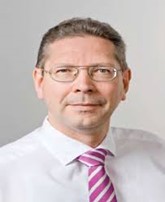
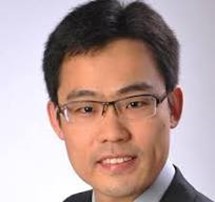

Ralph Kennel, Zhenbin Zhang, Ricardo P. Aguilera
Abstract:
The goal of this tutorial is to provide working knowledge on the development and implementation of MPC in different application fields. The introduction teaches the basic MPC principles, including mathematical techniques and optimization methods necessary to formulate and solve the control problem. In the second part, this tutorial will focus on addressing practical challenges in MPC of electrical drives. Particularly, this tutorial introduces the recent development of predictive encoderless control for AC motor drives. In addition to the expected combination of predictive control and pulse signal injection method, the cooperation of predictive control and fundamental frequency model method will also be introduced. Finally, in the last section, applications on high-power grid-connected converters including photovoltaic inverters, battery management systems, and active power filters are presented. These case studies demonstrate practical MPC designs and evaluate and discuss their results.
Tutorial 4 (2nd December, 0830-1230)
dEmerging Solid-State-Transformer based Electric-Vehicle Ultra-fast Charging Station
Instructors:
- Sanjib K. Panda, National University of Singapore, Singapore
- Jaydeep Saha, National University of Singapore, Singapore
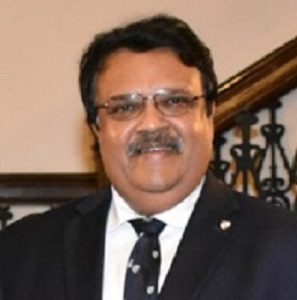

Sanjib K. Panda, Jaydeep Saha
Abstract:
Transportation electrification is one of the major energy sustainability spotlights of this decade due to the accelerated push for carbon footprint reduction by various government policies worldwide, fueled by the commitments made by governments at various environmental summits. With the rapid growth of electric-vehicle (EV) industry in the past few years, the development of EV charging infrastructure is picking up pace simultaneously. This tutorial will focus on the emerging applications of SST based EV ultra-fast charging solutions that has incredible potential for providing highly compact and efficient EV ultra-fast charging solutions in the near future (especially in space-constrained urban applications), and will highlight the state-of-the-art research and developments in this domain. The tutorial will start off with a brief introduction to the EV fast/ultra-fast charging conc, along with an overview of the SST technology and its potential in compact EV fast/ultra-fast charging solutions while providing a succinct review of the various relevant SST topologies. Secondly, the discussion will shift to the concept of medium-voltage (MV) utility-grid-connected universal EV fast/ultra-fast charging station with bidirectional fast charging capability. The multi-port universal fast/ultra-fast charging/discharging station’s V2G/G2V modulation/control (while ensuring that the expectations of mimicking an existing public refueling station can be approached), implementation aspect and comparative evaluation with existing solutions would be outlined. Tutorial Slide Can be downloaded from here.
Tutorial 5 (2nd December, 1330-1730)
Next Generation SiC/GaN 3-Φ Variable Speed Drive Systems
Instructor:
- Johann W. Kolar, Swiss Federal Institute of Technology (ETH) Zurich, Switzerland
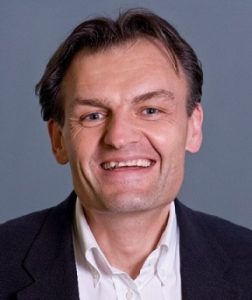
Abstract:
- Variable-speed drive systems should feature high power density and low installation costs, offer wide input and output voltage/motor speed ranges, and ensure low EMI without requiring shielded motor cables. Accordingly, next-generation PWM inverters utilizing fast switching SiC/GaN power semiconductors should integrate LC output filters and/or generate continuous output voltages to prevent conducted or radiated EMI, reflections on long motor cables, high-frequency motor losses, dv/dt-related motor insulation stresses and bearing currents, such that conventional low-cost motor technology can be utilized. The Tutorial first analyses different dv/dt- and full- sinewave output filter concepts and highlights the advantages of multi-level voltage DC-link converter topologies regarding filter volume minimization. Next, the integration of inverter and motor is discussed, and a new phase-modular inverter concept (Y-inverter), extending the inverter functionality from buck to buck-boost operation, is introduced and subsequently condensed into a three-phase current DC-link inverter that employs a single-bridge-leg voltage-to-current DC/DC conversion input stage and advantageously utilizes novel four-quadrant switches in the DC/AC output stage. Next, starting from the basic DC/AC current DC-link topology a three-phase DC-link AC/AC converter concept is derived and also translated into a voltage DC-link concept following duality considerations. In a final step, indirect and direct AC/AC matrix converters without intermediate energy storage elements are introduced, followed by a discussion of multi-step commutation and space vector modulation schemes. A brief comparative evaluation of voltage/current DC-link and matrix AC/AC converter approaches concludes the
Tutorial. His tutorial and keynote slides can be downloaded here. Keynote Slide Tutorial Slide
Tutorial 6 (2nd December, 1330-1730)
Grid-Integration Technologies and Beyond for Solar Photovoltaic Systems
Instructors:
- Yongheng YANG, Zhejiang University
- Yinxiao ZHU, Zhejiang University
- Dehong XU, Zhejiang University



Yongheng YANG, Yinxiao ZHU, Dehong XU
Abstract:
Driven by the continuous drop in the levelized cost of energy (LCoE), photovoltaic (PV) systems are widely integrated into the power grid towards carbon neutrality, and for greener and more sustainable society. However, the high penetration of power electronics-based PV systems raises great concerns about grid instability due to intermittent power injection, such as the frequency stability induced by the deficient mechanical inertia in PV-/RES-rich power systems. Accordingly, various attempts have been made to enhance the entire system performance, emphasizing the grid-friendly integration of PV energy, to guarantee the grid resilience, reliability, stability, and energy harvesting. Beyond conventional passive integration, recent PV systems can be controlled as active power sources, particularly, mitigating the adverse effects and simultaneously providing high controllability and flexibility. In this context, this tutorial is designed to walk through the technological challenges for grid-integration of solar PV energy, and more importantly, to look at different solutions. This tutorial provides a comprehensive approach to designing grid-friendly PV systems, covering the details from modelling, topologies, and to advanced controls (grid-following and grid-forming to enhance the friendliness). The goal is to improve the functionality and manageability of grid-connected PV systems by advanced controls to ensure the sustainability, compatibility with the power grid, efficiency, and reliability of PV systems that adhere to grid regulations and help to reduce the LCoE. It is for intermediate and advanced engineers, and researchers seeking practical solutions for grid-friendly integration of PV energy. The prerequisite is basic power electronics and control.
Tutorial 7 (2nd December, 1330-1730)
Methods to Identify & Control Highly Non-Linear Three-Phase Machines
Instructor:
- Andreas Liske, Karlsruhe Institute of technology (KIT), Germany
- Alexander Oerder, Karlsruhe Institute of technology (KIT), Germany
- Leonard Geier, Karlsruhe Institute of technology (KIT), Germany
- Stephan Goehner, Karlsruhe Institute of technology (KIT), Germany



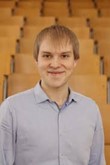
Andreas Liske, Alexander Oerder, Leonard Geier, Stephan Goehner
Abstract:
Highly utilized three-phase machines show a highly nonlinear electromagnetic behavior, making it very challenging or even impossible to control them using standard control-algorithms.
One very appropriate and well-proven method to cope with this nonlinearity is the measurement of multi-dimensional flux linkage maps for each possible operating point of the given machine. During operation a look-up-table is used to adjust the gain of the used control algorithm to the actual differential inductance in each given operating point. The flux maps are also used in non-linear model predictive control (MPC) schemes to enhance dynamics.
In this tutorial different methods to obtain multi-dimensional flux maps of permanent magnet synchronous machines (PMSM), synchronous reluctance machines (SynRM), electrically excited synchronous machines (EESM) and induction machines (IM) are presented. This includes steady state-tests, locked-rotor-tests, and a new approach that replaces flux maps with a physics informed neural network. In addition to the flux-map-identification, also one well-proven control method that makes use of these flux maps and enables for high dynamics is presented. Of course, also hands-on tips from our long-term lab-experience, dealing with several motor test-benches ranging from few hundred Watts (Pedelec/E-Bike motors) to several 100kW (automotive) for over a decade will be given in each of the described topics.
Tutorial 8 (2nd December, 1330-1730)
Condition and Health Monitoring of Power Electronic Components and Converters
Instructor:
- Huai Wang, Aalborg University, Denmark

Abstract:
With the increasing use of power electronic converters for electrical energy generation, conversion, transmission, and utilization, our society is moving forward to a fully electrical-driven chapter. From e-mobility, industrial drive, and energy storage to data analytics, information management, and digital transformation, power electronics technology services as a precise and efficient electrical energy conversion unit. They are all heavily electricity-dependent applications and require electrical energy with proper type. However, power electric converters are subject to frequent operational and environmental strains, which can induce failures. The prediction of these failures is difficult but important, so the operation of a system can be halted before a catastrophic failure occurs. Hence, it demands cost-effective and robust condition and health monitoring solutions for operation optimization and predictive maintenance, facilitating life-cycle-reduction and performance boost of power electronic converters.
This tutorial aims to present the state-of-the-art condition and health monitoring methods for power electronic components and converters. It starts with a brief introduction to the reliability and availability challenges of power electronics in different applications, underlining the importance, function, and benefits of condition monitoring, and their demands on field applications. Then, it discusses the condition monitoring methods for power semiconductor switches, capacitors, and power electronic converters. A few case studies for converters with silicon, SiC, and GaN devices, and electrolytic and film capacitors are used to illustrate the principles and associated practical considerations. Finally, it gives perspectives on the challenges and the gap between academic research and industrial applications in condition and health monitoring in power electronic converters.

